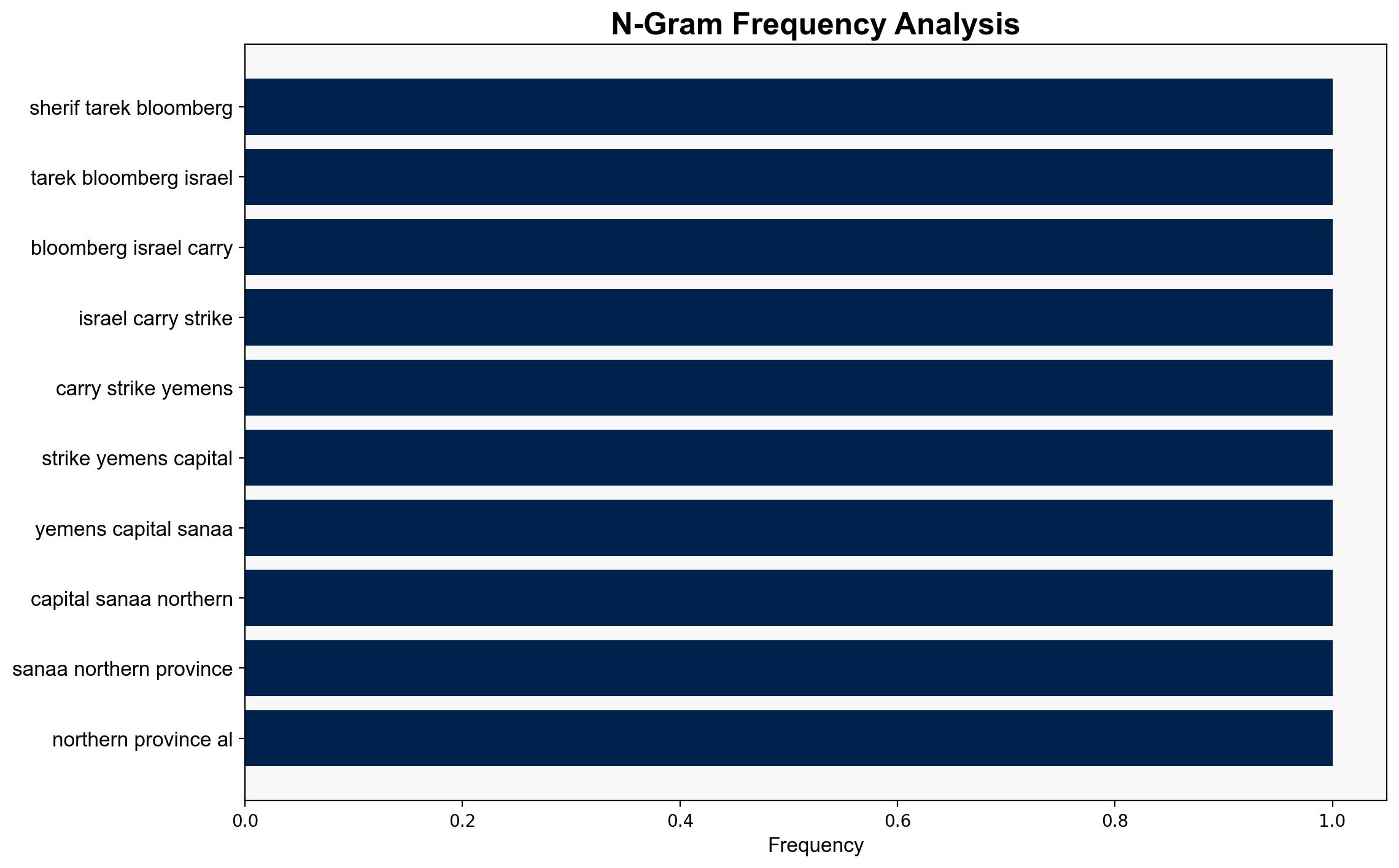Israel Kills 35 in Yemen as Fire Exchange With Houthis Continues – gcaptain.com
Published on: 2025-09-11
Intelligence Report: Israel Kills 35 in Yemen as Fire Exchange With Houthis Continues – gcaptain.com
1. BLUF (Bottom Line Up Front)
The most supported hypothesis is that Israel’s military actions in Yemen are part of a broader strategy to counter Iranian influence and preemptively disrupt Houthi capabilities. Confidence level: Moderate. Recommended action: Increase diplomatic engagement with regional allies to de-escalate tensions and monitor potential retaliatory actions by Iran-backed groups.
2. Competing Hypotheses
1. **Hypothesis A**: Israel’s strikes in Yemen are primarily aimed at degrading Houthi military capabilities to prevent future attacks on Israeli interests, particularly in the Red Sea.
2. **Hypothesis B**: The strikes are a strategic maneuver to pressure Iran by targeting its proxy groups, thereby indirectly influencing Iran’s regional activities and negotiations on other fronts.
Using ACH 2.0, Hypothesis A is better supported due to the direct threat posed by Houthi missile and drone attacks on Israeli ships and infrastructure. Hypothesis B, while plausible, lacks direct evidence linking the strikes to broader Iranian negotiations.
3. Key Assumptions and Red Flags
– **Assumptions**: It is assumed that Houthi attacks are directly coordinated with Iranian strategic goals. This may overlook the possibility of independent Houthi actions.
– **Red Flags**: The report from the Houthi news agency claims civilian targets were hit, which could indicate potential misinformation or collateral damage not fully accounted for in Israeli reports.
– **Blind Spots**: Limited information on the internal decision-making processes within the Houthi leadership and their direct communication with Iran.
4. Implications and Strategic Risks
– **Escalation Risks**: Continued military exchanges could lead to broader regional conflict involving other Iranian proxies like Hezbollah.
– **Geopolitical Impact**: Strains on Israel’s relations with Arab nations, particularly those with recent normalization agreements.
– **Economic Consequences**: Potential disruptions in Red Sea shipping routes, affecting global trade.
– **Cyber Threats**: Increased likelihood of cyber retaliation by Iran or its proxies targeting Israeli infrastructure.
5. Recommendations and Outlook
- Enhance intelligence-sharing with regional partners to improve early warning systems for missile and drone threats.
- Engage in backchannel communications with Iran to reduce proxy conflict escalation.
- Scenario Projections:
- Best Case: Diplomatic interventions lead to a ceasefire and reduction in hostilities.
- Worst Case: Full-scale regional conflict involving multiple state and non-state actors.
- Most Likely: Continued tit-for-tat exchanges with periodic escalations.
6. Key Individuals and Entities
– Benjamin Netanyahu
– Yahya Saree
– Israel Katz
7. Thematic Tags
national security threats, cybersecurity, counter-terrorism, regional focus





